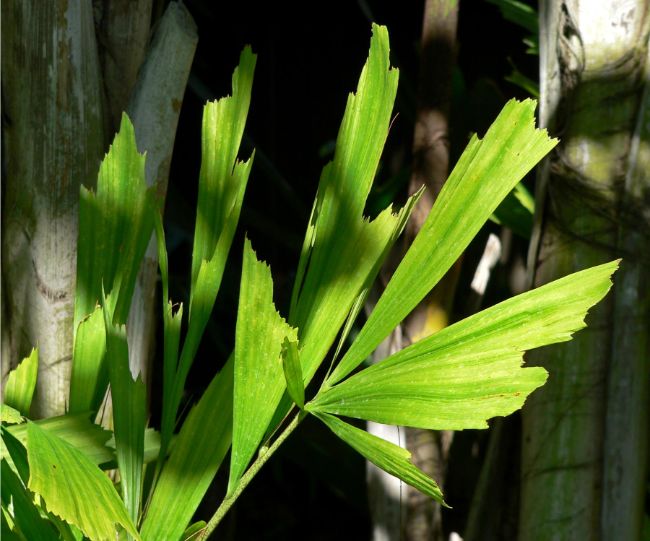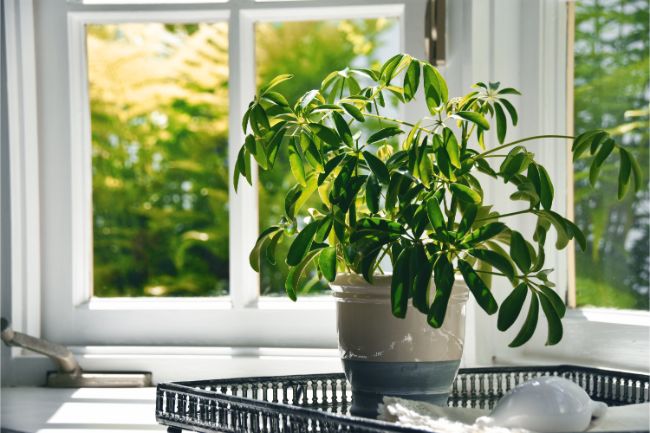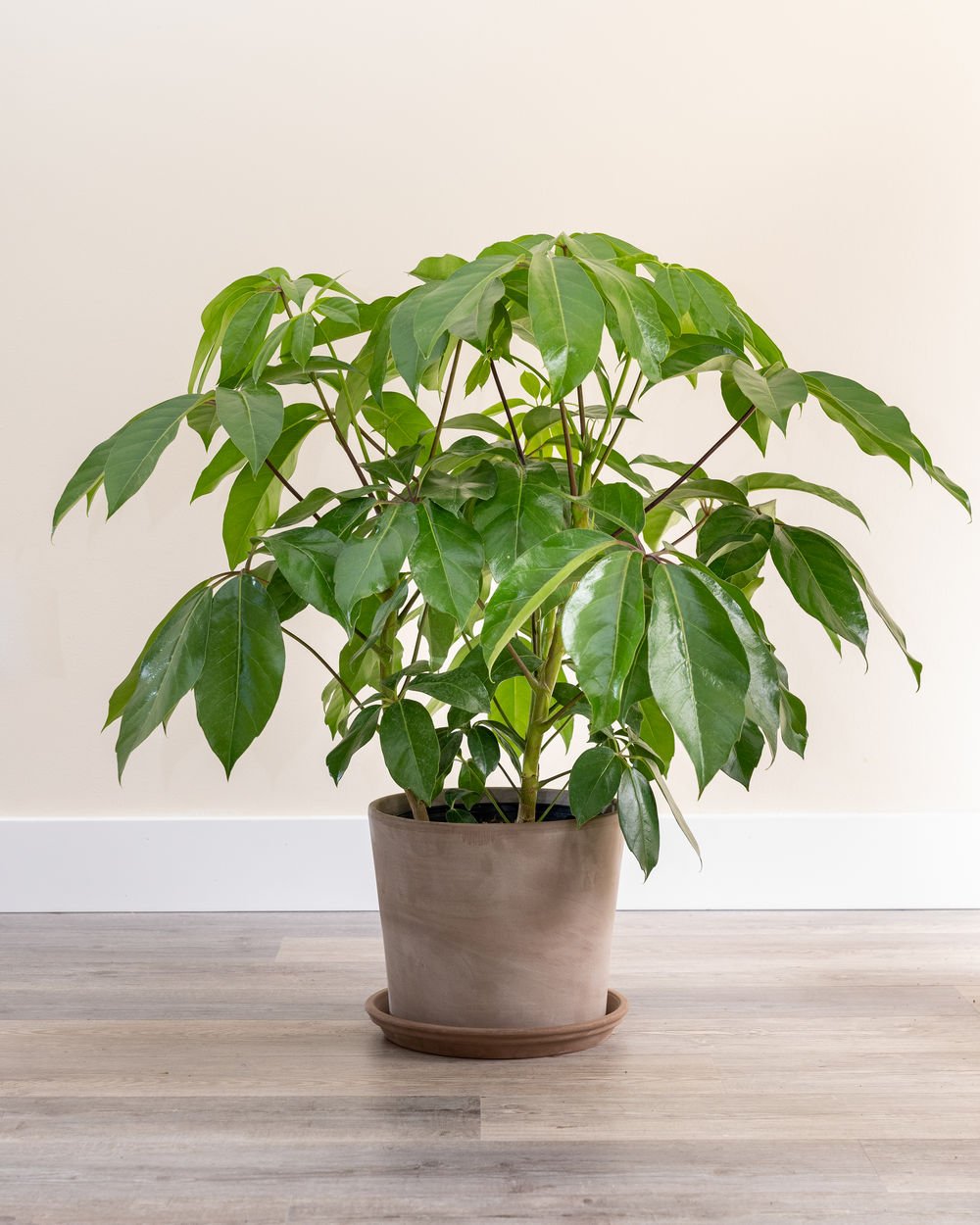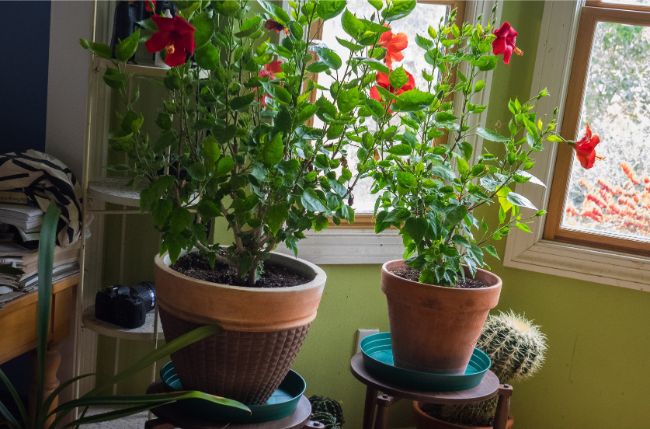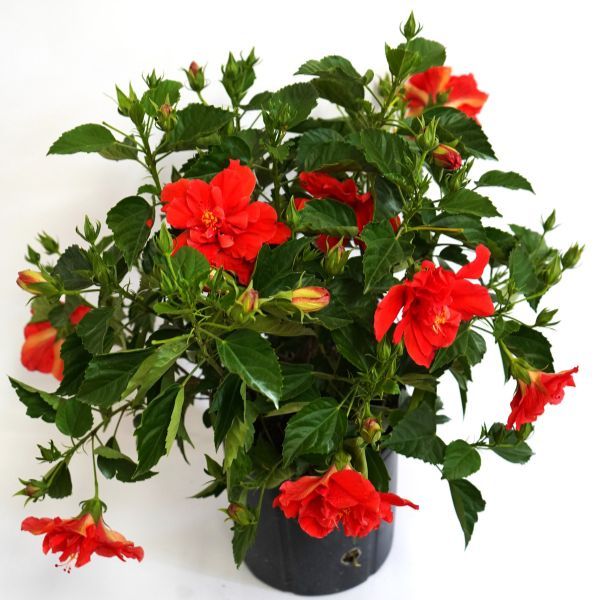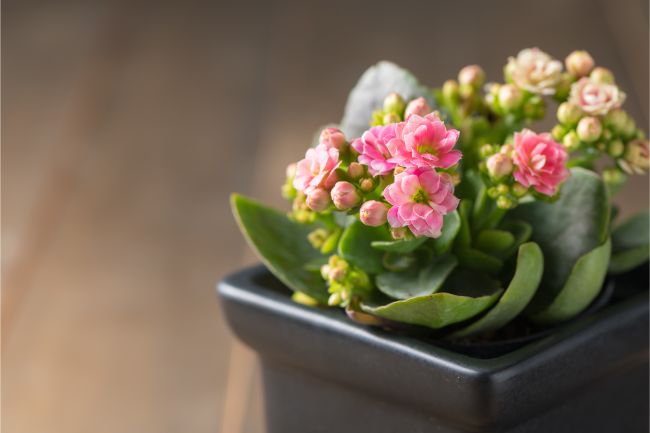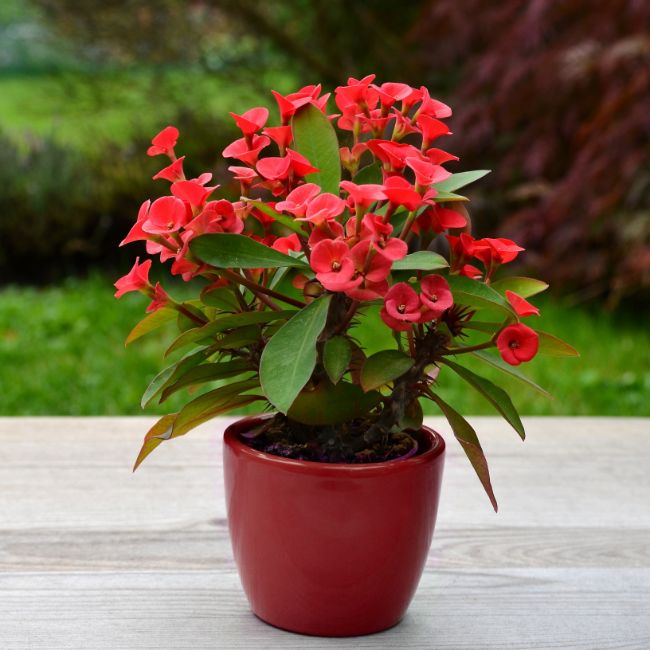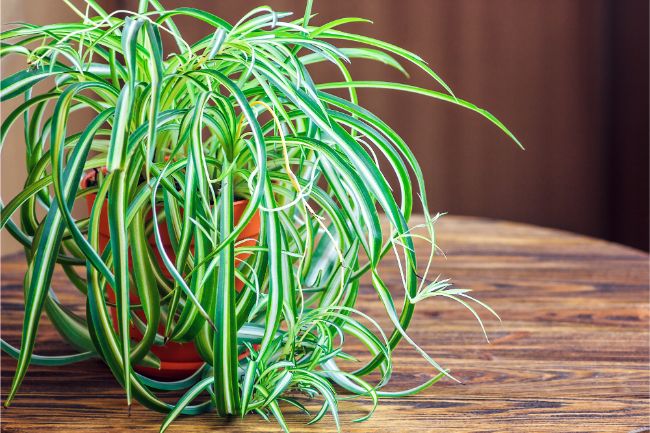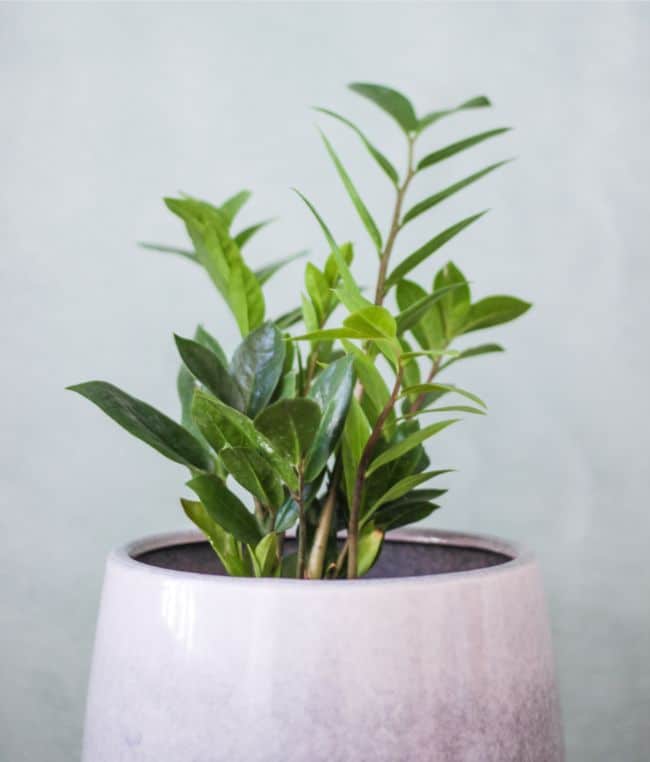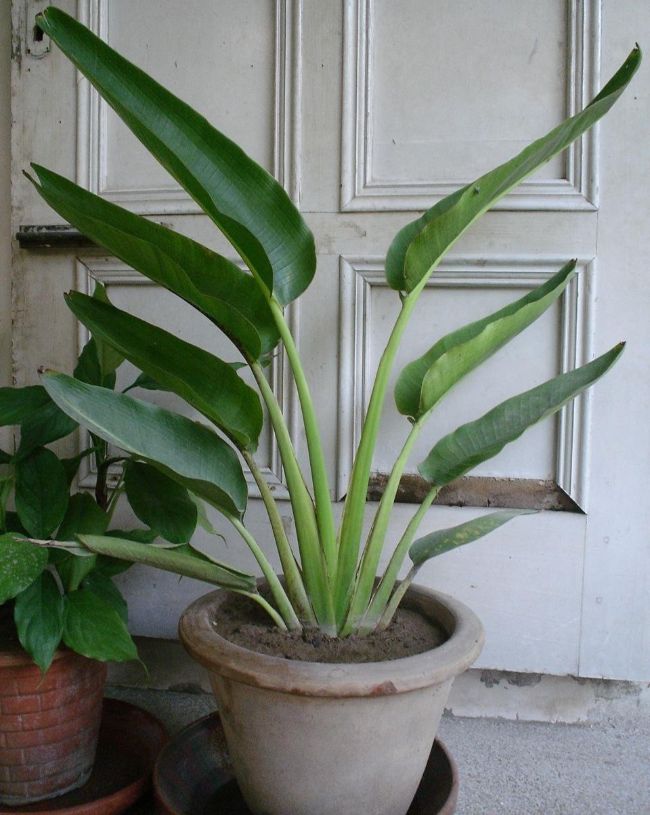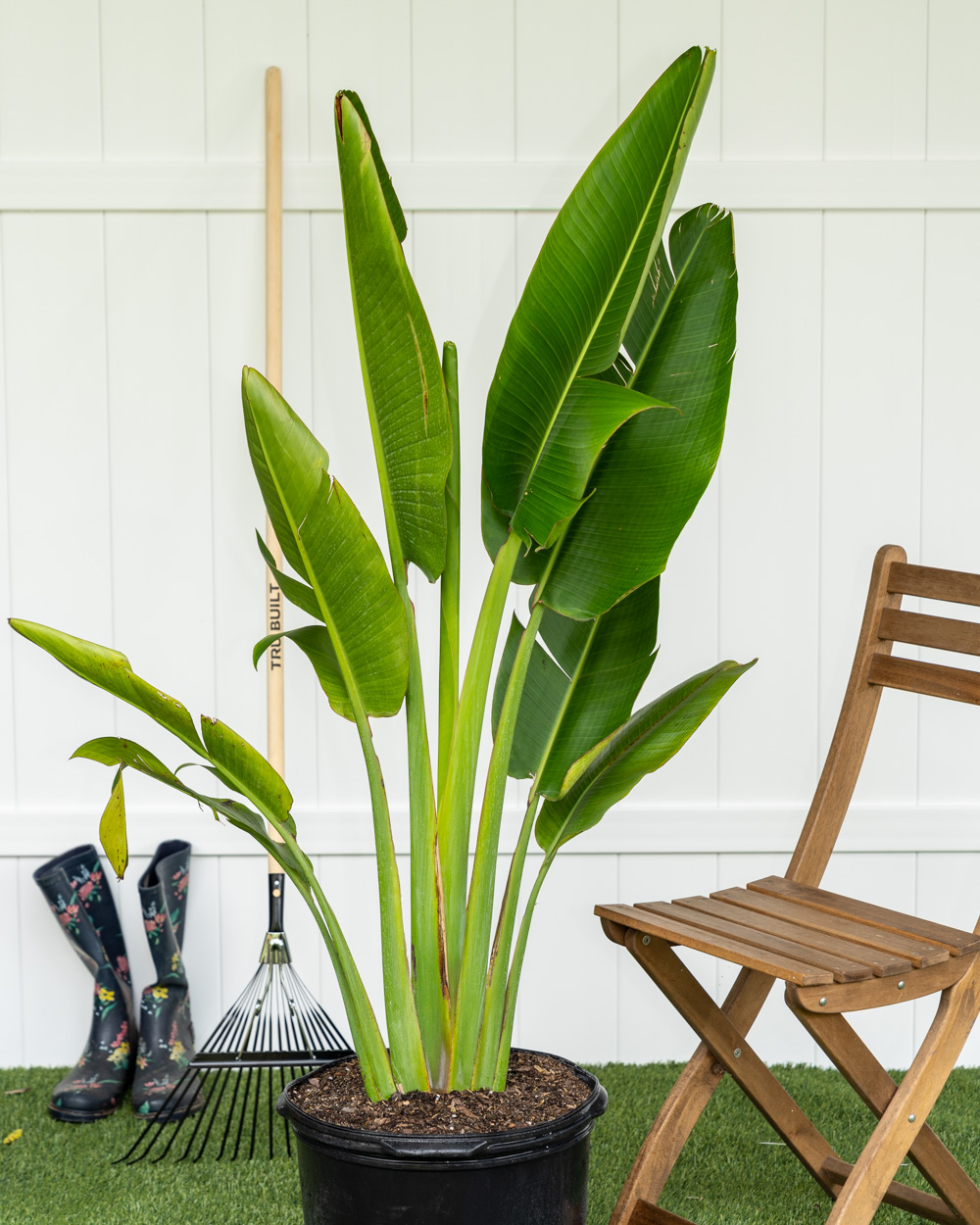When choosing indoor plants for hot rooms, whether you are adding indoor greenery to a sunroom, an area with strong, warm sunlight, your choices in plants that thrive in hot conditions are vast and varied. Even if you don’t have time for that sun soaked paradise vacation, you can recreate the feeling by filling your indoor space with lush, tropical plants that will bring paradise to you.
When it comes to the best indoor plants for hot rooms, there’s something to fit everyone’s desire and room space and plant types range from palms, succulents, flowering, those with colorful foliage, to name a few. Continue reading because we have highlighted some of the best indoor plants for hot rooms and tips for success in growing them. These plants not only thrive in consistently warm conditions, but it’s required it for proper growth.
1. Croton (Codiaeum variegatum)
Crotons bring a carnival of year-round color to warm and sunny indoor spaces with their multicolored foliage. This tropical native of southern Asia comes in a host of different brightly colored leaf patterns and with shapes that are just as varied.
The leathery foliage is smooth and glossy and shapes include curly, long and thin, oval and oak leaf-shaped, ranging in color mixes of red, yellow, pink, burgundy, green and orange. They are sure to bring a riot of color wherever situated. When grown indoors and at maturity, crotons can grow around 3 to 4 feet tall.
To keep indoor crotons performing at their best, grow in a rich, well-drained potting mix and in containers with drainage. For the best-colored foliage, situate in a sunny location where temperatures average between 65°F and 85°F.
Water when the top inch of soil feels dry to the touch and feed monthly during spring through summer with a water-soluble houseplant blend, ceasing during winter. These are tropical plants that require humidity, so mist with water several times weekly, or place the pot on a tray of pebbles.
2. Meyer Lemon (Citrus x meyeri)
If you love lemons but do not live in citrus country or a year-round warm climate, don’t let that stop you because you can grow an indoor lemon tree. Meyer lemons are hybrids and are slightly sweeter, juicier and about the size of a baseball, when compared to your standard supermarket lemon.
The clusters of white flowers will fill the room with their heavenly sweet fragrance and the tree blooms off and on year-round. Best of all, Meyer Lemons make perfect additions to an especially warm and sunny indoor spot when grown as houseplants and only reach around 5 feet tall at maturity.
For the best growth and production of flowers and fruit, maintain temperatures of 65°F through 85°F and situate in a location that receives full sun for the majority of the day.
Although the tree is self-pollinating, when flowers form you will need to help pollination by dusting the tip of a paintbrush with pollen and transferring to another bloom. It can take six months or a bit longer for fruit to ripen.
Grow the lemon tree in a 5-gallon draining container filled with a rich, well-drained potting mix and water when the top several inches of soil feels dry. During spring though summer, feed with an all-purpose liquid fertilizer, ceasing in winter and fall, and mist several times weekly with water to create humidity.
3. Fishtail Palm (Caryota mitis)
Nothing screams the tropics like an indoor palm tree and this is true for the Fishtail palm, earning its common name from its long green and divided, triangular-shaped leaflets resembling the tail of a fancy goldfish.
Growing around 6 feet tall and 3 feet wide with a clumping habit, it makes a stately addition to large, sunny indoor spaces with temperatures of 65°F to 85°F. When grown in preferred conditions, Fishtail palms are hardy and low-maintenance plants that will bring an eye-catching and tropical appeal for years to come.
For the best performance, grow a Fishtail palm in containers with bottom drainage and in a rich, well-drained soil. It prefers bright light and grows well in a southern exposure. Water when the top several inches of soil becomes dry and feed monthly with an all-purpose, water-soluble blend, ceasing during fall and winter.
Native to the hot and humid jungle environments of Southeast Asia, be sure to provide above average humidity levels. Read this article to learn about the best ways to increase humidity for your indoor plants.
4. Umbrella Tree (Schefflera actinophylla)
Native to the tropical rainforests of Australia, Java and New Guinea, Umbrella Trees are the perfect fit for a sunroom or other warm and sunny location indoors. It gets its common name from the glossy green leaves containing up to 16, 12-inch leaflets that radiate outward and resemble an umbrella.
Indoors, an Umbrella Tree can grow up to 15 feet tall, making it great for large spaces, and with its tropical good looks, it’s bound to catch everyone’s eye.
When grown in preferred conditions, Umbrella Trees are hardy and low-maintenance plants. It will thrive indoors situated in full sun and with temperatures between 65°F and 90°F, making it an ideal indoor plant for hot rooms.
Grow the Umbrella Tree in a rich, well-drained potting mix and use containers that drain. In addition, water when the top inch of soil becomes dry and fertilize monthly, spring through summer, with a water-soluble houseplant fertilizer. Cease fertilizing in fall and winter when growth slows.
Its native environment is hot and humid, so create indoor humidity by misting the Umbrella Tree by using some of these techniques.
5. Tropical Hibiscus (Hibiscus rosa sinensis)
A sunny and hot room such as a sunroom or one with a southern exposure is the perfect location for the blast of year-round blooms a Tropical Hibiscus offers. The selections in flower colors are almost endless, as the large blooms can be a mix of colors, pink, purple, white, red, orange or yellow.
The blooms are either single or double and are quite showy against the dark green glossy foliage, making it sure to grab anyone’s attention entering the room. It is sure to add a colorful and tropical feel wherever placed with the shrub filled with the large flowers that can reach 6 inches in diameter.
When growing a Tropical Hibiscus, adequate light is essential for the production of blooms, so be sure to place in a sunny location like a south-facing window. They also like temperatures on the warm side, so anywhere ranging between 65°F and 85°F is suitable.
Grow in draining containers filled with a rich, well-drained soil and water when the top inch of soil feels dry. During spring through summer, fertilize monthly with an all-purpose houseplant blend, ceasing applications in fall and winter. To create humidity, mist the Tropical Hibiscus several times weekly, or place the container a tray of pebbles.
6. Kalanchoe (Kalanchoe blossfeldiana)
Native to tropical Africa and Madagascar, Kalanchoe is a flowering succulent that will thrive in a sunny and warm indoor location. The plant produces clusters of small, pointed petal flowers in bright colors of red, orange, yellow, white and lavender and are highlighted against the glossy, dark green and fleshy scalloped-edged leaves.
Growing about a foot tall and wide, it is sure to bring color and interest placed in a sunny window or location with a southern exposure. With its hardiness and low-maintenance requirements, Kalanchoe is a great choice for the lazy or black thumb gardener. It also holds the honor of being one of first plants in space, making the journey on a Soviet ship in 1971.
Kalanchoe performs best in a warm location with temperatures ranging between 65°F and 85°F and the sunnier the location, the better the production of flowers. It requires a fast-draining soil like a cactus mix and only requires water when the top several inches of soil become dry.
During the growing season of springtime through summer, feed monthly with a liquid houseplant fertilizer and stop applying during fall and winter. You can propagate new plants by planting the fleshy leaves.
To read more about caring for Kalanchoe Blossfeldiana, read my article all about how to care for this wonderful plant.
7. Crown of Thorns (Euphorbia milii)
Native to Madagascar, Crown of Thorns gets its common name from the thorny stems resembling the thorny crown Christ wore. Although its thorn-lined stems may make you think it is a cactus, Crown of Thorns is really a succulent and will thrive in a dry, sunny and hot location inside the home.
This makes it perfect for a southern exposure or sunroom. Bright green fleshy leaves cover thorny branches that when cut exude a toxic milky sap, so wear gloves when pruning. Even when grown indoors, Crown of Thorns blooms almost year-round with colorful showy bracts in colors of red, pink or yellow. Indoor plants average around 2 feet wide and tall.
For the best performance, grow your Crown of Thorns in a fast-draining soil such as that used for cactus. Situate the plant in a sunny location for the best production of flowers and in a room with temperatures ranging between 65°F and 85°F.
Water when the top several inches of soil become dry and feed monthly during the growing seasons of spring through summer with a liquid houseplant fertilizer. Crown of Thorns prefers low humidity, so there is no need for misting plants for proper growth.
8. Spider Plant (Chlorophytum comosum)
Native to tropical and southern portions of Africa, Spider Plants are one of the easiest plants to grow in a warm indoor location. If you would like to add some greenery to a hanging basket, then look no further than a spider plant. It gets its common name from the small, spider-like babies that form on long stems and hang over the side of the basket.
The long flowing foliage is either bright green or variegated in stripes of white and green and plants have a robust growth habit, quickly filling a container with its vegetation. It produces small white clusters of flowers that eventually develop into the spider babies, from which you can propagate additional plants.
To produce the best growth, situate a Spider Plant in an indoor location with temperatures ranging between 65°F and 90°F and in indirect bright light. Make sure the container drains and fill with a rich, well-drained potting mix. They grow rapidly so you may have to repot your Spider Plant yearly.
Keep the soil moist during the growing seasons of spring through summer by watering when the top inch of soil feels dry. In fall and winter, you may only have to water every other week. In addition, you can feed the Spider Plant in spring through fall with a half-strength liquid houseplant fertilizer applied every three to four weeks and cease feeding in fall and winter.
9. ZZ Plant (Zamioculcas zamiifolia)
If your indoor room is on the hot side and has a location with low, indirect sunlight, it’s the perfect situation to grow the tropical ZZ Plant. Native to Tanzania, eastern Africa and South Africa, ZZ Plant is stemless but its glossy green leaflets lining the petioles that rise from the center rhizome in an alternating arrangement, gives it the appearance of forming a Z, thus its common name.
With the unique arrangement of leaves and their appearance, a ZZ Plant adds an interesting appeal wherever it is used indoors. It is also a hardy and low-maintenance plant, making it the perfect selection for the lazy gardener.
With its tropical nature, ZZ Plant prefers an indoor environment with temperatures between 65°F and 90°F and performs well in low light locations. Grow in a peat-based potting mix that drains well and make sure the container has bottom drainage. This is a drought-tolerant plant, so you only need to water when the soil becomes dry.
In addition, its feeding needs are low, so you only need to fertilize twice yearly with a liquid houseplant blend. This very forgiving plant will add a green tropical feel to an indoor location that is warm.
10. Tree Philodendron (Philodendron bipinnatifidum)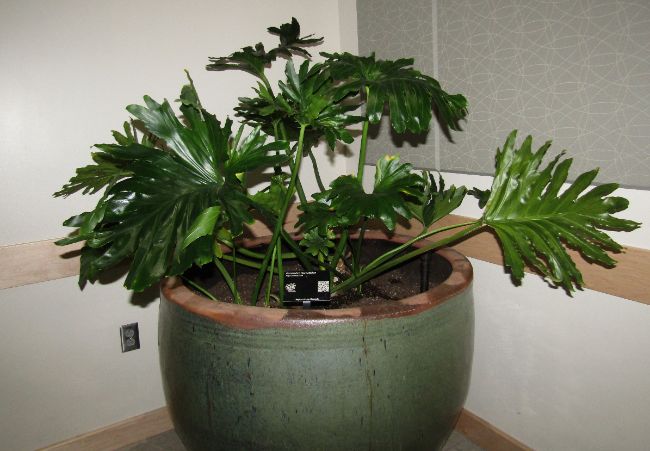
If you are looking to make a bold statement with tropical greenery, then look no further than the Tree Philodendron, native to tropical areas of South America. It also thrives in a hot indoor location. The huge, glossy green leaves are divided into sections and grow 30 inches long and 24 inches wide and even indoors plants can grow up to 8 feet tall.
The large leaves and long stems arise from a single trunk that develops hanging rootlets that will attach to a structure for climbing, or the plant is happy just growing in a container with no support.
The bigger the container, the bigger the plant will get so be prepared for a Tree Philodendron to take up some space. The addition of a Tree Philodendron will certainly add a lush tropical and jungle appeal wherever it makes its home indoors.
For the best growth, Tree Philodendron prefers an indoor location with temperatures ranging between 75°F and 95°F and with bright, indirect sunlight. Grow in draining containers filled with a rich, well-drained potting mix and water when the top several inches of soil become dry.
Fertilize every other month with a liquid houseplant blend and cease feeding during fall and winter. Although not fussy about humidity, it is best to mist the plant with water weekly. Tree Philodendrons are another low-maintenance plant that produces robust growth when situated in preferred indoor conditions.
11. Travelers Palm (Ravenala madagascariensis)
If you have a sunny and warm room that is large enough, you can definitely make a bold statement with the addition of the tropical Travelers Palm. Native to Madagascar, this is not a palm at all but actually a relative to bananas.
These need a large space to spread out, as its long green stems holding a single leaf spread out into a flat fan shape that can reach 8 feet wide at maturity and just as tall. As the plant matures and the bottom leaves die, it develops a single trunk. With its exotic good looks, a Travelers Palm will definitely bring the tropics indoors.
To keep your Travelers Palm happy, maintain indoor temperatures of 65°F to 85°F and situate it in a sunny location. It will be quite happy in a southern exposure. Since these do grow quite tall and large, make sure the container is large enough to keep the Travelers Palm from getting top heavy and tumbling over.
Grow it in a rich potting mix that drains well and water when the top several inches of soil become dry. You can feed it monthly during spring through summer with a liquid houseplant blend, ceasing during fall and winter. Mist it regularly to create humidity.
Some Like It Hot
When it comes to indoor plants for hot rooms, tropical plants and those native to arid regions tops the list. With this large of a selection of hardy plants, there’s choices suitable to fill the largest space to the smallest and add lush tropical greenness or pump up the interest with striking colorful blossoms and foliage.
Before you know it, you’ll be decking out that once hot room with the cool air of greenery one or maybe two plants or more at a time.



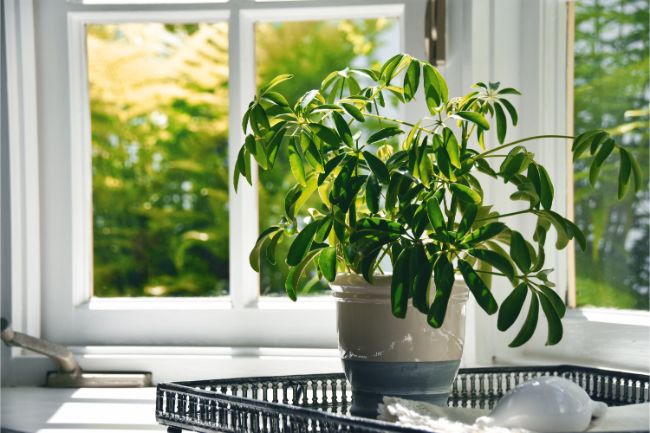
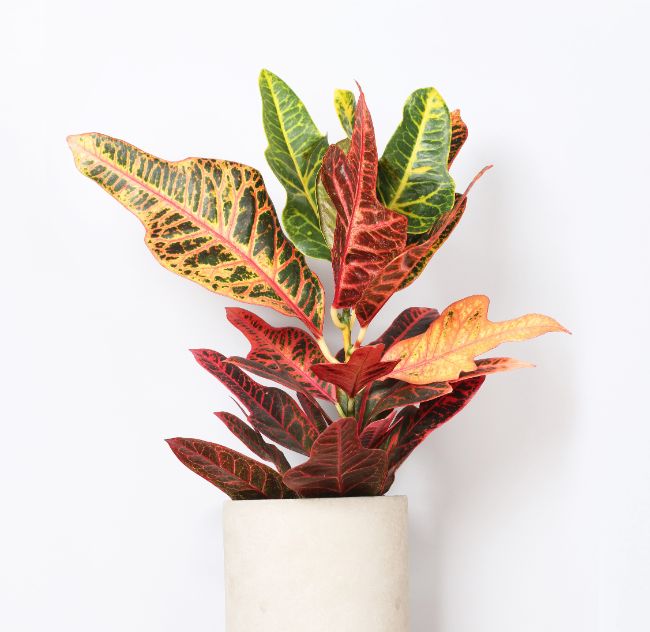


:max_bytes(150000):strip_icc()/2288301_homeg9963_0-2000-645fb21a83bc43a1b2c353395572c8b0-50d6940e606f49ac869c4254838e520b.jpg)
